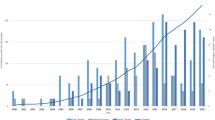Summary
Propionyl-CoA is formed principally during amino acid catabolism. It is then converted chiefly to succinate in a described three-step sequence. Free propionate is formed from propionyl-CoA to a very limited extent, but this anion can participate in a futile cycle of activation and hydrolysis, which can significantly deplete mitochondrial ATP. Free CoA and propionyl-CoA cannot enter or leave mitochondria, but propionyl groups are transferred between separate CoA pools by prior conversion to propionyl-L-carnitine. This reaction requires carnitine and carnitine acetyl transferase, and enzyme abundant in heart tissue. Propionyl-L-carnitine traverses both mitochondrial and cell membranes. Within the cell, this mobility helps to maintain the mitochondrial acyl-CoA/CoA ratio. When this ratio is increased, as in carnitine deficiency states, deleterious consequences ensue, which include deficient metabolism of fatty acids and urea synthesis. From outside the cell (in blood plasma), propionyl-L-carnitine can either be excreted in the urine or redistributed by entering other tissues. This process apparently occurs without prior hydrolysis and reformation. It is suggested that heart tissue utilizes such exogenous propionyl-L-carnitine to stimulate the tricarboxylic acid cycle (via succinate synthesis) and that this may explain its known protective effect against ischemia.
Similar content being viewed by others
References
Rosenberg LE. Amino acids. In: Stambury JB, Wyngaarden JB, Fredrickson DS, et al. eds. The metabolic basis of inherited diseases. New York: McGraw-Hill, 1983;474–497.
Scislowski WD, Hokland BM, Davies van Thienen WIA, et al. Methionine metabolism by rat muscle and other tissues. Biochem J 1987;247:35–40.
Smith EL, Hill RL, Lehman IR, et al. (eds.) Principles of biochemistry (general aspects), 7th ed. New York: McGraw-Hill, 1983;637.
Przyrembel H, Bremer HJ, Duran M, et al. Propionyl-CoA carboxylase deficiency with overflow of metabolites of isoleucine catabolism at all levels. Eur J Pediatr 1979;130: 1–14.
Lee SHC, Davies EJ. Amino acid catabolism by perfused rat hindquarter. The metabolic fates of valine. Biochem J 1986;233:621–630.
Bieber LL. Carnitine. Ann Rev Biochem 1988;57:261–283.
Ferri L, Valente M, Ursini F, et al. Acetyl-carnitine formation and pyruvate oxidation in mitochondria from different rat tissues. Bull Mol Biol Med 1981;6:16–23.
Bremer J. Carnitine: Metabolism and functions. Physiol Rev 1983;63:1420–1479.
Stumpf DA, McFee J, Parks JK, Eguren L. Propionate inhibition of succinate: CoA ligase (GDP) and the citric acid cycle in mitochondria. Pediatr Res 1980;14:1127–1131.
Rossi CR, Alexandre A, Carignani G, Siliprandi N. Regulation mechanism for fatty acid α-ketoglutarate oxidation. Biochim Biophys Acta 1971;234:311–316.
Gruskay JA, Rosemberg LE. Inhibition of hepatic mitochondrial carbamyl phosphate synthetase (CPSI) by acyl-CoA esters: Possible mechanisms of hyperammonemia in the organic acidemias. Pediatr Res 1979;13:475–480.
Chalmers RA, Roe CR, Stacey TE, Hoppel CL. Urinary excretion of L-carnitine and acylcarnitines by patients with disorders of organic acid metabolism: Evidence for secondary insufficiency of L-carnitine. Pediatr Res 1984;18: 1325–1328.
Ohtani Y, Nishiyama S, Matsuda I. Renal handling of free and acylcarnitine in secondary carnitine deficiency. Neurology 1984;34:977–979.
Ciman M, Rossi CR, Siliprandi N. On the mechanism of the antiketogenic action of propionate and succinate in isolated rat liver mitochondria. FEBS Lett 1972;22:8–10.
Scholte HR, Wit-Peeters EM, Bakkers JC. The intracellular and intramitochondrial distribution of short-chain acyl CoA synthetase in guinea pig heart. Biochim Biophys Acta 1971;231:479–486.
Rossi CR, Alexandre A, Carignani G, Siliprandi N. The role of mitochondrial adenine nucleotide pool on the regulation of fatty acid and α-ketoglutarate oxidation. Adv Enzyme Regul 1972;10:171–186.
DiLisa F, Menabò R, Siliprandi N. L-propionyl carnitine protection in ischemic rat heart. Mol Cell Biochem, 1989;88: 169–173.
Paulson DJ, Traxler J, Schmidt M, et al. Protection of the ischaemic myocardium by L-propionylcarnitine: Effects on the recovery of cardiac output after ischemia and reperfusion, carnitine transport and fatty acid oxidation. Cardiovasc Res 1986;20:536–541.
Liedtke AJ, Demaison L, Nellis SH. Effects of L-propionylcarnitine on mechanical recovery during reflow in intact hearts. Am J Physiol 1988;255:169–176.
Sherry AD, Malloy CR, Roby RE, et al. Propionate metabolism, in rat heart by 13C n.m.r. spectroscopy. Biochem J 1988;254:593–598.
Author information
Authors and Affiliations
Rights and permissions
About this article
Cite this article
Siliprandi, N., Lisa, F.D. & Menabò, R. Propionyl-L-carnitine: Biochemical significance and possible role in cardiac metabolism. Cardiovasc Drug Ther 5, 11–15 (1991). https://doi.org/10.1007/BF00128238
Issue Date:
DOI: https://doi.org/10.1007/BF00128238




